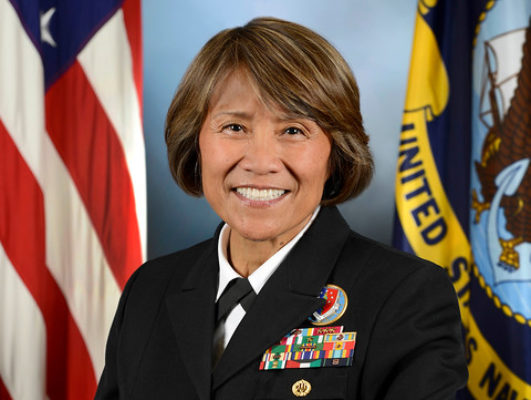As COVID-19 and its effects became widespread earlier this year, hundreds of University of Texas at Austin researchers pivoted their work to focus on matters related to the coronavirus. These studies cover everything from biology to infrastructure to human behavior and, in some cases, have already generated results that are helping society, says interim Vice President for Research Alison Preston.
“Our research touches on many facets of the disease’s impact on society, from the cellular level all the way to individuals, cities and countries,” Preston says. “And we need all of this information to inform how we should function during this unprecedented pandemic.”
Most on-campus research activities were paused in late March to accommodate statewide stay-at-home orders, but the Office of the Vice President for Research gave exemptions to research teams conducting COVID-19 studies and those working on other critical or time-sensitive projects. The remainder of UT’s research community worked remotely.
Some researchers are looking at people’s actions and emotions in relation to this virus. Statistics and data sciences professor Catherine Calder is analyzing the prevalence of social distancing in different groups of people based on factors such as income, race and location. Psychology professor Frances Champagne studies the epigenetics of stress and resilience and has “rapidly repositioned her research to look at the impacts of COVID on people’s behaviors and biomarkers related to stress,” Preston says.
Before the pandemic, Champagne says she and her lab researchers had been conducting a study of UT students using an app-based assessment of mental health, stress, sleeping patterns and activity levels to predict stress hormone levels and epigenetic changes — changes in the way genes function. Once the virus emerged, she began to explore how changes in lifestyle due to COVID-19 affected stress and gene function.
“Of course, it is a stressful time for all of us,” Champagne says. “But knowing how people adapt to stress and what lifestyle changes are most impactful on these measures is critical to long-term planning in the pandemic. We need to keep people safe but also make sure we help people adapt to the changes necessary to limit the spread of the virus.”
Champagne says she and her colleagues have been expanding the app to assess students’ physical environment — what kind of house or apartment they live in, for example — ability to practice social distancing and personal effects of the virus — such as whether they or a family member was ill. She adds that they will later analyze “stress hormone levels and epigenetic changes to identify specific patterns of biological risk.”
Other researchers are approaching the pandemic from an infrastructure perspective, Preston says. Kasey Faust, an assistant professor in the Department of Civil, Architectural and Environmental Engineering, has been analyzing how social distancing and recent reopenings have influenced our demands on water systems. Junfeng Jiao, an associate professor in the Community and Regional Planning Program, has studied train and highway traffic data to make predictions about how the virus could spread. Professor Matthew Hall and associate professors Christopher Rylander and Marissa Rylander in the Department of Mechanical Engineering have been working on ways to sterilize and reuse personal protective equipment to supply first responders in the event of mass shortages.

Some of the research efforts at UT have had an immediate effect on our world. Lauren Ancel Meyers, a professor of integrative biology and statistics and data sciences, leads the COVID-19 Modeling Consortium in partnership with the Texas Advanced Computing Center. Their work has been extremely important for epidemiological modeling, Preston says. Meyers and her team have been using demographics and other information to make projections about the number of COVID-19 cases nationwide. They created a social distancing model that has been used by the State of Texas and the White House to determine what guidelines to issue at a public health level.
Other researchers are directly involved in work related to biology and testing. Jason McLellan and Ilya Finkelstein, both associate professors in the Department of Molecular Biosciences, and Jennifer Maynard, a professor in the Department of Chemical Engineering, identified and created a model of the spike protein specific to the new coronavirus.
“Their work is positioned to be highly instrumental in the worldwide search for a coronavirus vaccine,” Preston says.
McLellan is also leading a team that discovered an antibody that binds tightly to the spike protein. They recently published a report about the antibody, which was originally found in a llama named Winter in 2016 when the researchers were studying two earlier coronaviruses, SARS-CoV-1 and MERS-CoV.
“Science is a lot of trial and error,” he says. “We don’t know how to get where we’re trying to go. Sometimes it’s a bit of a random walk. … That’s the idea behind obtaining funding for general, basic science research. You want to fund research into a bunch of different pathogens. We didn’t necessarily know that the next one was going to be a pandemic.”
Preston says she is proud of UT’s varying contributions to the fight against the virus.
“I wouldn’t say one is more important or even more interesting than the other, but collectively, the body of work is very important,” Preston says. “All of the projects I’ve highlighted — and many more that I haven’t — will have a direct impact in the face of this pandemic.”

Other non-coronavirus research efforts should not be downplayed, she says.
“I don’t want to place these COVID-related projects above the existing work on campus,” she says. “UT’s research endeavors as a whole are collectively aimed at solving the problems of tomorrow.”
June 1 was the first day of UT’s Research Restart, a phased plan for slowly and safely allowing more researchers to return to their campus labs and research spaces to resume time-sensitive work — beyond COVID-19 — that was paused in March.
Research at UT, Preston says, “is a salient and specific example of how universities contribute in fundamental ways to the betterment of our society.”





